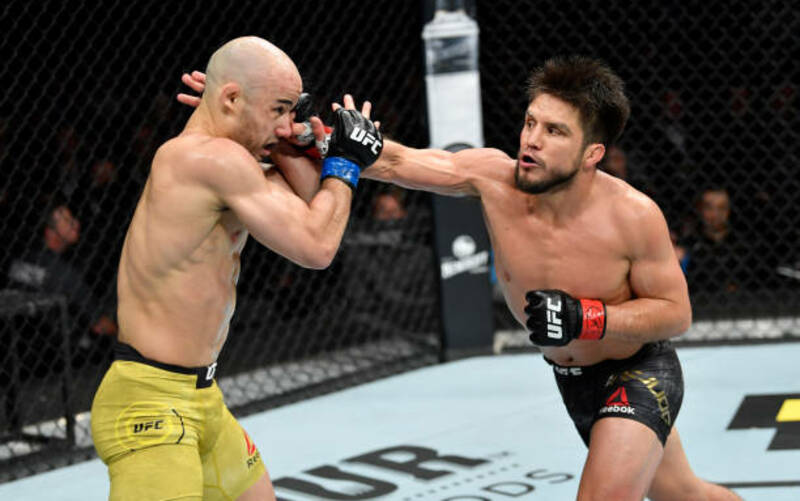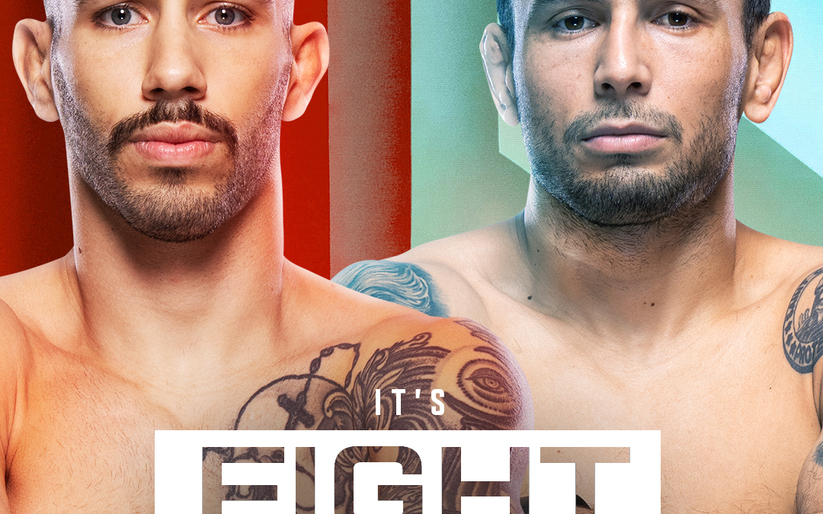When Henry Cejudo defeated Marlon Moraes for the UFC bantamweight title, I was simultaneously impressed and confused by what I had just seen. For Cejudo to finish one of the sport’s most violent finishers, no matter how it happened, that is a phenomenal win to have on one’s record. On the other hand, the questions I had surrounding Cejudo weren’t exactly answered, so much as they were simply ignored by the champion.
It was a very two-sided fight with Moraes having a long stretch of sustained success early, before Cejudo managed to steal the momentum back in the second round. Despite its weirdness, the fight is on my short-list of favorite fights this year. Here’s how it happened.
Henry Cejudo vs. Marlon Moraes Breakdown
Drawbacks of the Bladed Stance
Despite unveiling a much deeper and craftier striking game stemming from this bladed stance, successive fights have emphasized some holes in Cejudo’s defense and counterpunching. The drawbacks of Cejudo’s karate stance have been exploited, even as early as the Sergio Pettis fight.

>Baby Pettis (standing southpaw) steps his lead leg out and paws at Cejudo’s lead hand. ‘The Messenger’ throws a right kick to the body, but Pettis steps laterally to his right, minimizing the effect of the kick. Pettis continues to circle to his right, fighting into Cejudo’s lead hand with his own. Pettis jabs and steps to the inside angle against Cejudo. Cejudo parries the jab with his own lead hand, and attempts to counter with a straight right. Pettis slips to the outside of the punch, levers off the jab, and lands a lead hook against Cejudo.

>Pettis steps in and folds over his hip with a jab. Cejudo drags the jab down with his lead hand, and attempts to pull-counter the jab with a straight right. Pettis, expecting the right hand, slips his head offline, parries the punch with his rear hand, and counters Cejudo with a body kick as Cejudo is attempting to close him down.
Henry’s stance works against more plodding opponents who attempt to close him down, because he’s able to angle out going backwards and remain in range to counter, but it doesn’t work as well against opponents who can simply snipe at range. It also isn’t optimal against fighters with sound positioning in the pocket that just commit to counterpunching Cejudo.

>I’ve never been particularly impressed with Demetrious Johnson’s striking game in a vacuum, but against Cejudo in their rematch, he put forth one of his craftier showcases on the feet. Largely playing an in-out game, DJ (standing southpaw) targeted the legs and body of Cejudo and landed almost everything he threw. Cejudo’s stance doesn’t allow him to check kicks easily, and if he attempts to retract his lead leg, he ends up squaring his stance, leaving his positioning compromised.
(For a detailed breakdown of Cejudo’s revamped striking approach, read this excellent piece by my friend and fellow analyst, Ryan Wagner.)
Since Johnson and Pettis were able to chop up Cejudo’s legs and body on the outside with kicks, Marlon Moraes seemed like a terrible opponent for Cejudo to let kick with impunity. For a round and half, this proved to be the case. Moraes began hammering Cejudo’s legs, and Cejudo looked clueless in terms of how to answer.

>When Cejudo attempted to crash the pocket from range, Moraes was waiting with a check left hook in combination.

>Cejudo quickly learned that he had to make Moraes pay for kicking his legs, but when Cejudo retracts his leg and recoils from the kick, he breaks his stance. As a result, his right hand doesn’t have much steam behind it, and he is forced to shift to southpaw. As he’s moving forward, he eats another left hook counter.

>Moraes is a excellent counter-kicker, which is a unique trait in MMA. Cejudo throws a head kick from his rear leg. Moraes blocks up high and braces for the kick with the weight on his front leg. As Cejudo’s rear leg is retracting, Moraes takes a small step with his right leg with his toes pointed out. This shifts his weight and opens his hips up with the inside low kick with his left leg. Cejudo retracts his legs into a square stance, and follows with a leaping left hook. Moraes then pivots off his lead leg (now his right), and throws out a check right hook counter that cuffs Cejudo as he sails by.
Cejudo was forced to fight Moraes from miles away to insulate him from Moraes’ low kicking, but as a result, Cejudo mounted virtually no offense in the first frame. He was too far outside of punching range to land anything of substances, and when attempted to shoot on his opponent, Moraes just limp-legged and pivoted away.
Gold Medal Mode
The first round was probably a 10-8 for Moraes, and for a decent chunk of the second round, it looked to be over for the Olympian. Halfway through the second round, however, Cejudo grew tired of being kicked to pieces, so he started bombing on Moraes in the pocket.

>Moraes is a fine counterpuncher, but he isn’t particularly layered defensively. He doesn’t make very educated reads in the pocket, so Cejudo just overloaded him with volume and aggression.

>Once Cejudo pressured past Moraes’ kicking range, Moraes started selling out on his counters and threw back every time Henry pressed him. Far be it for me to call Cejudo’s work in the pocket especially technical, but it denied Moraes the comfort in range and pace that he had grown accustom to.

>Cejudo is still largely a right-handed fighter, but he mixed up his stance, changing up the right hand as a jab and a rear hand power punch.
Like a lot of Mark Henry fighters, Moraes’ pivots (particularly along the fence) are quite sharp heading left, but he lacks the same technical acumen pivoting off to his right. As a result, Moraes couldn’t stop himself from angling into Cejudo’s lead right hand at every turn.
I was also very surprised at Cejudo’s ferocity in the clinch. I was even more surprised at Moraes’ cluelessness in the clinch.

>At this point, ‘The Messenger’ has virtually abandoned the bladed, karate stance in favor of a more even-footed stance. Due to this adjustment, Cejudo has far less distance to collapse to get in on Moraes. When he maintains the pocket, he’s able to punch directly into the clinch, grab the collar ties, and just brutalize Moraes. Bonus points for the Rick Story-esque body shots as Moraes is holding double collar ties.

>Sometimes, Cejudo would punch into the clinch and opt for double-underhooks, pressing Moraes into the fence and kneeing his body.
Once the Cejudo got rolling, crowding Moraes between the pocket and the clinch, the fight was as good as over.
Conclusion
So, what do we draw from this performance?
Firstly, Henry Cejudo is one of the most physically overwhelming forces in MMA at the moment. There are not many fighters with the durability or tenacity to track down and brawl a dynamite finisher like Moraes on one leg. It also speaks to Cejudo’s adaptability and coachability, because after Round 1, he and his corner knew that things needed to shift immediately.
It is strange for an analyst to be critiquing a fighter for using an objectively more skillful and layered approach. However, I can’t look at Cejudo’s struggles against Johnson, Pettis, and Moraes and conclude that he is fighting in a way that plays to his strengths. His ability to turn back the momentum against Moraes was nothing short of amazing, but getting your leg kicked off and providing virtually 0 offense for the first frame and a half doesn’t tell me that you’re strategic approach was perfect.
When he’s utilizing the long, bladed stance, his technical defense is stronger when he’s fighting shorter, stockier opponents who attempt to close him down. He’s quite good at retreating and looking for optimal angles, fighting hands, setting traps, and he doesn’t have as much distance to close. However, I don’t know if this performance says anything good about Cejudo’s penchant for fighting technical at bantamweight.
Maybe there will come a time when Henry is able to synthesize his deepening technical toolbox with his freak physicality, but even if it doesn’t, the MMA world will be watching Cejudo’s next fight with baited breath. He is one of the most terrifying talents in the world, and he’s only getting better.
Main Photo
Embed from Getty Images



